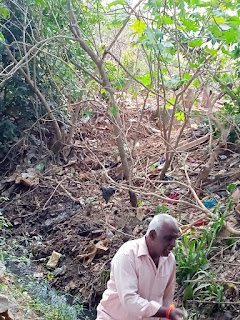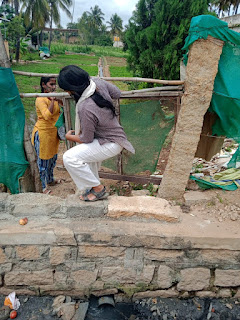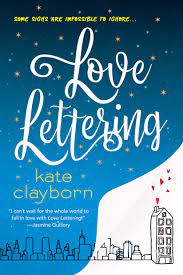I've been reading about One Health for years now. One Health as a term has been in the news for the past 10-15 years. Basically it means that human health, animal health, and environmental health are interlinked and affect each other. So, there is a "One-ness" about the planet, its creatures, their activities and their health.
With Covid, One Health is really on the forefront. And I think most people appreciate just how closely interlinked we are like never before.
Another looming public health crisis, a bit slower to peak than Covid but likely to be even more catastrophic, is antimicrobial resistance (AMR). AMR is a classic example of a One Health problem: it intricately tangles humans, animals, soil, water and overall planetary health in a tight Gordian knot. For years we have been talking about the emergence of "super-bugs" which are not stopped by any antibiotics. Given the overall ubiquitous presence of antibiotics in our lives, it's not surprising that Nature does its thing and bugs become resistant to the drugs.
In some parts of the world (such as Sweden, Denmark, Holland etc), antibiotics are banned from the animal husbandry industry and agriculture and are very sparingly used in hospitals. In India, I've been wondering how to look at antibiotics, bacteria and AMR in humans, soil, water etc. for a while now, but couldn't figure out how to do so.
I got introduced to Vishwanath Srikantaiah and Biome Trust recently. They are looking at water conservation and wastewater reuse. Among wastewater reuse, they are specifically looking at the use of treated and untreated wastewater in agriculture. Hence I tagged along to one of their field visits and collected samples. The two young scientists accompanying me were Rakshita , an economist who is passionate about water conservation and studies the impact of Million Wells campaign and lake rejuvenation and Nikita, an architect who is looking urban and rural water usage and is also very involved in lake rejuvenation. Ramya from my group also was with me that day, as she is from that same Vijayapura-Shidlaghatta area and has farmland belonging to her family and was curious about water usage in farms there.
First we went to Vijaypura to Mr. Muniraju's farm. Mr.M grows mulberry leaves, roses and corn. He has been using untreated waste for 25 years.
25 years ago, Mr. Muniraju was in desperate straits: he had land, but no water. He had started building a house but ran out of money. The house had walls but no roof. He had no money to pay for his kids' school. Vijayapura is in a rain-shadow region with less than 650mm of rainfall annually. He had spent a lot of money digging borewells but to no effect. In a last ditch attempt, he started using water from the nearby open drains which typically get a combination of "grey" water (feces-free) and "black" water (with fecal matter). It seemed to work. He was able to irrigate his crops. Over time, he has also bought another 5 acres of land. This second piece of land is mostly irrigated by grey water. He has been able to build his house, send his kids to college as well. Here is a video about him, taken by the BBC some years ago.

The collection well storing grey water from the neighborhood: water from small cottage silk farms, hotels, bus stands, houses etc flows through open drains which have been tapped to fill this well. Water from the drains move into the well through gravity.
Water from the collection well is pumped into the field
This is the open drain abutting the field
Muniraju helps me collect the water from this drain.
Mulberry field. Rakshita of Biome helps me collect soil from the middle of the field.
Look at the long stretch of mulberry! On the left are teak trees bordering the farm.
I decided to collect water, soil and mulberry leaves for plating on bacterial plates. I collected these from the water source (near the open drains), at the water inlet to the farm, middle of the field and towards the far end from the water inlet. I used small sterile urine collection bottles (they cost Rs. 5 apiece) for the job. After collection of water and soil, the bottles need to be thoroughly wiped. I kept samples from different fields in different ziplocks. What would help is a backpack with multiple compartments to keep tubes, ziplocks, tissue papers, markers etc within easy reach.
This is the fecal sludge containing wastewater collected in Muniraju's first farm. Once a year or so they have to clean it out to remove the sludge. Muniraju's farm hands wear gum-boots while they water the farm and walk around in it.
Fecal sludge/ slurry is highly in demand in farms. Thus, trucks called "honeysuckers" go around Bangalore city (to apartments, corporate offices, hospitals, hotels etc) or to smaller cities which do not have UGD (underground drainage) and suck up all the fecal matter and dump it on various farms for a small sum. After Muniraju's successes with waste-irrigated agriculture, other farms too have begun using them in Vijayapura. Now, they have a system in place where they take turns in getting the slurry to their farms.
I did not feel up to collecting any water from any of the collection wells... I need better equipment for this. Ideally like a fish line with a little bottle on the end that gets thrown and then drawn back. Bottle would have to be heavy enough to sink... maybe will need to tie a stone to the neck of the bottle.
Most other farms in Vijaypura supplement the use of wastewater with the borewell water, if they are able to successfully dig deep enough to tap into a deep aquifer. We met one of M's neighbors/ friends who uses wastewater solely for growing cattle fodder and borewell water for vegetables. He said though that it was wastewater that helped him get his two sons through engineering college!
This is what Mr. M and his friend said about their use of wastewater in agriculture:
a) The amount of fertilizer they need to use is drastically lower as compared to fields with borewell water
b) The "health" of the crops is higher with wastewater than borewell
c) However, the number of weeds with wastewater is also higher
Neither of them feels that using wastewater impacted their health or their families'.
A new bird seen in these farms that I learned about from Nikita:
Cinereous tit 
From Wiki
After Vijayapura, we headed to Devanahalli, a success story in terms of lake rejuvenation using treated sewage water.
This is what Devanahalli Sihi Neer Kere (Sweet Water Lake) looked like a few years ago:

(from Wikimedia)

(from Wikimedia)
In the backdrop is Devanahalli Fort. Sihi Neer Kere is so called because the waters here were not hard or metallic. This lake had dried up many years ago.
Devanahalli Lake today. This is after rejuvenation of the lake with treated sewage water from Bangalore.
What is thrilling (thanks to explanations by Rakshita and Nikita from Biome Trust) is the fact that many of the wells surrounding the lakes are also getting replenished. Many abandoned wells are now showing visible water levels. Here is a beautiful old well:
This is what the well looks like from the outside. Water!!
The temperature inside the well is a good 5-7 degrees lower than the surroundings. I would have loved to go all the way down, but the stone steps looked dicey and there are supposed to be snakes in that area.
In Devanahalli village, we went to another farmer's house where pudina (mint) is grown using untreated wastewater. Here we are going to into the guy's backyard after crossing the drainage canal
Look at that lovely pudina! Pudina, spinach, coriander and most other greens grow beautifully in wastewater. Most cities in India are supplied with green and vegetables grown in wastewater.
After Devanahalli, we returned to the city. We went to Chikkajalla to Lake Palanahalli. Lake Palanahalli is an urban lake supplied entirely by untreated wastewater. Lake Palanahalli is part wetland part lake. Wetlands have a lot of vegetation growing in them: water hyacinchs, water cabbages, lotuses, cats tail, zandus, and others. All these plants are very good at extracting nutrients and pollutants from wastewater and naturally filtering and cleaning the water. To me, this lake underscored the old belief: Mother Nature knows best. The BBMP security guard said that near the inlet, the lake is stinky. But as you go further and further away, there are fish, birds and the water sparkles. And none of this happens due to (much) human intervention! The plants come up by themselves, they clean the water, the fish come by themselves and the birds come by themselves. How humbling and reassuring it is to see Nature in action!
The white bordered bund on the top left of the pic is where the sewage enters the lake. As the water flows through the greenery, it gets cleaned and becomes habitable to water fowl. We saw purple moorhen, egrets and cormorants.
This is Jakkur lake, rejuvenated entirely by
treated wastewater. A lot of the credit goes to one lady, Dr.
Annapurna Kamath. Jakkur lake is a haven for water fowl: in winter, the place is crowded not just with humans but pelicans, painted storks, cormorants and others. I'll go into more detail into this lake in another post.

Tomorrow I will plate all my samples on various agar plates. This will be the first time I'm doing hardcore microbiology. I am quite excited about learning about bacterial identification. Will post about my learnings soon.





































